
Modern Simple Wooden Wardrobe Children's Bedroom Storage Cabinet Computer Study Desk 1 Piece Desk Wardrobe



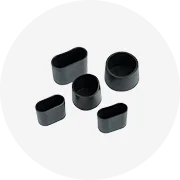
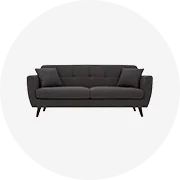
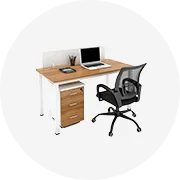

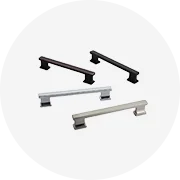
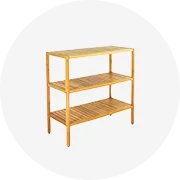

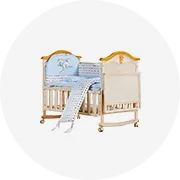
A window cabinet is a versatile furnishing that not only offers a practical storage solution but also elevates the visual charm of the area adjacent to a window. It is crafted to fulfill both utilitarian and ornamental purposes, harmonizing with the room's design and the window's structural features.
Window cabinets come in an array of styles to suit various tastes and functional needs. For example, under window cabinets are perfect for areas lacking floor-to-ceiling windows, providing a top surface for display or seating. These units can be customized with or without back panels, depending on whether open access or concealment is preferred. Cabinets around kitchen windows are tailored to the kitchen's activity flow, offering convenient access to herbs or utensils during meal preparation. They might include specialized sections for particular kitchen implements, thus increasing their practicality. Bay window cabinets are bespoke creations that fit into the trapezoidal space, often transforming it into an inviting reading alcove with storage below. These can feature integrated seating with plush cushions, marrying comfort with elegance. Each cabinet type is distinguished by its ability to adapt to its environment, presenting unique design features like built-in bookcases or extendable desks, which amplify their functionality and enhance user interaction.
The architecture of a window cabinet is carefully conceived to strike a balance between aesthetic allure and practicality. A typical under the window cabinet may boast a flat top for showcasing items, with compartments or drawers beneath for stowing away belongings. Many models offer adjustable shelves or sections, permitting personalization to accommodate stored items. For kitchen cabinets with windows, the design may incorporate specific holders for stemware or dedicated slots for cutlery, merging storage with convenience. The mechanics of these cabinets are engineered for user-friendliness, featuring elements like silent-closing hinges and sliding drawers to improve accessibility and simplify operation. The doors might be fitted with contemporary handles or touch-release mechanisms for a streamlined, hardware-free facade.
The selection of materials is pivotal for the longevity and visual impact of window cabinets. Tempered glass is favored for its safety attributes—it breaks into diminutive, less dangerous fragments if shattered—and its transparency provides insight into the cabinet's contents. Stainless steel is chosen for its modern appearance and its resilience to rust and corrosion, particularly in kitchen settings where humidity is prevalent. The fusion of these materials not only guarantees a durable product but also imparts a contemporary and professional aesthetic that can endure the demands of both home and commercial environments. Materials are also often chosen for their eco-friendliness, with producers offering alternatives like reclaimed glass or steel, contributing to a more sustainable product life cycle.
Window cabinets are employed across diverse commercial landscapes. In retail, tall glass showcase window cabinets are utilized to exhibit merchandise while safeguarding them from dust and pilferage. In office spaces, they can function as bookcases or filing systems, capitalizing on natural illumination from windows to foster a more welcoming work environment. Within the hospitality sector, such as in cafes or eateries, these cabinets can showcase wines or ornamental pieces, augmenting the atmosphere while providing practical storage. The commercial value of these cabinets lies in their capacity to improve the setting while addressing specific storage requisites, contributing to an orderly and productive space. They can also act as dividers in open-plan areas, delineating spaces without erecting full partitions and preserving an airy ambiance.
The principal role of a window cabinet is to offer storage that is both orderly and readily accessible. Tasks that a below window cabinet might fulfill include concealing electronic devices like modems or cable boxes. In culinary spaces, kitchen cabinets over sink windows can store cleaning agents or crockery, keeping them handy yet off the counters. These cabinets are often designed with specific features in mind, such as ventilation for electronics or water-resistant coatings for moisture-prone areas. They may also be tailored to incorporate lighting, adding another dimension of utility as they can brighten a workspace or illuminate the contents within.
Window cabinets offer attributes that distinguish them from ordinary storage units. For instance, kitchen cabinets with window over sink may include frosted glass to obscure contents while still harmonizing with the kitchen's style. LED illumination can be integrated into cabinet over kitchen window designs to spotlight items on display and enrich the room's mood. The unique selling propositions of these cabinets encompass their tailorability, the integration of ingenious storage solutions, and the employment of superior materials that deliver both utility and elegance. Moreover, the adoption of cutting-edge technologies like smooth-motion hinges and touch-latch systems can refine the user experience by ensuring effortless operation and a neat, uncluttered look.
The advantages of installing window cabinets are numerous. They optimize space utilization, especially in areas where storage might be scarce. The aesthetic incorporation of a cabinet around window can revitalize a room, rendering it more spacious and open. For businesses, enhanced organization can lead to greater efficiency and productivity, as well as a more polished presentation for clients or customers. In residential settings, they can dispel clutter and foster a serene living space. The psychological benefits of an orderly environment are significant, as they can diminish stress and bolster well-being for the occupants.
Choosing the appropriate window cabinet involves assessing the dimensions of the space, the intended functionality, and the prevailing decor. For a modern, streamlined kitchen, a kitchen cabinet above window with a minimalist aesthetic and stainless steel accents may be fitting. Conversely, a classic study might be enhanced by a wooden under window cabinet with traditional features. Engaging with suppliers on Alibaba.com can yield insights into the optimal choices available, ensuring that the selected cabinet satisfies the specific demands of the space. Considerations such as load-bearing capacity, installation simplicity, and the possibility for future alterations should also be taken into account.
Upkeep of a window cabinet entails routine cleaning and occasional fine-tuning. For glass elements, employing a gentle cleaner will avert scratches and preserve transparency. Stainless steel should be maintained with appropriate cleaning agents to maintain its sheen and prevent marks. Regular checks and adjustments of fixtures will guarantee that cabinet doors and drawers continue to operate smoothly. It is also crucial to inspect seals and edges to ensure they remain impervious to water, especially in kitchen settings where exposure to moisture is common.
The installation of a window cabinet should be undertaken with precision. It typically requires exact measurements of the area, secure fastening of brackets and supports into wall studs, and verification that the cabinet is level and aligned. For bespoke or weighty units, professional fitting is advised to ensure safety and firmness. Vendors on Alibaba.com may provide comprehensive guidelines or assistance for the installation process. They might also offer templates or mounting systems that facilitate the installation, guaranteeing that the cabinets are affixed accurately and sturdily.